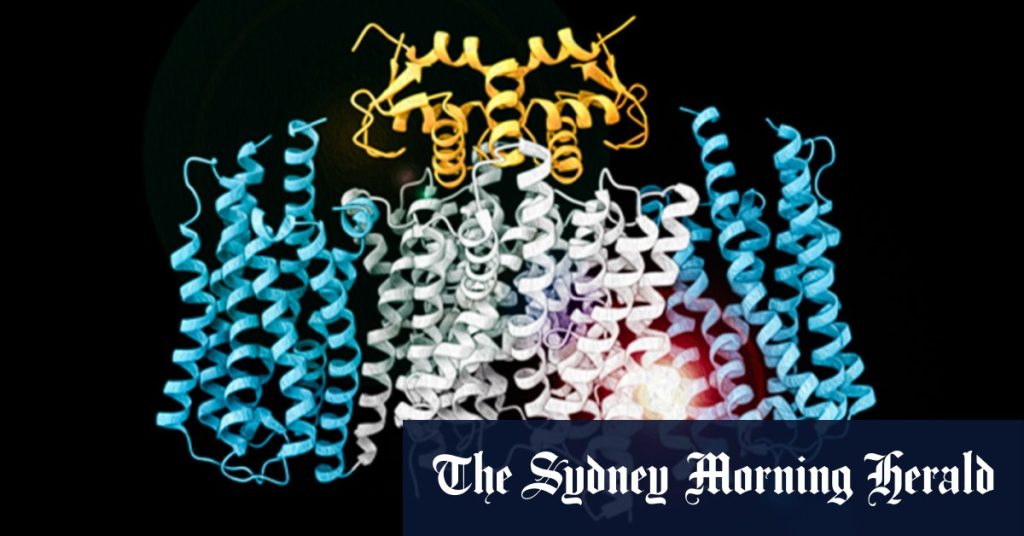Scientists have discovered a unique protein called LYCHOS that is plant-like and has the potential to be an effective drug target. This protein is different from others found in humans, making it easier to specifically target it without causing off-target effects. Decades of research on auxin transporters in plants has given scientists a head start in understanding LYCHOS and its role in diseases where cell growth goes awry. By inhibiting this protein, they hope to slow down abnormal cell growth.
LYCHOS consists of a G protein-coupled receptor (GPCR), a well-known drug target because it is easily accessible on cell membranes. Many existing therapeutics, such as beta blockers for cardiovascular disease and salbutamol for asthma, target GPCRs. Using cutting-edge cryo-electron microscopy, scientists were able to capture high-resolution, 3D images of LYCHOS. This advanced imaging technique involves taking samples of the protein to extremely low temperatures to prevent damage and capture detailed atomic structures.
The ability to visualize and understand the structure of LYCHOS through cryo-electron microscopy has opened up new possibilities for targeting this protein therapeutically. By gaining insights into how LYCHOS functions and its role in disease, researchers hope to develop drugs that can inhibit its activity and potentially regulate cell growth. The unique properties of LYCHOS, combined with the well-established drug target of GPCRs, offer a promising avenue for future drug development and treatment strategies.
The use of cryo-electron microscopy in this research represents a significant advancement in the field of structural biology. This cutting-edge technology allows scientists to capture detailed images of proteins at the atomic level, providing valuable insights into their function and potential as drug targets. By combining millions of low-resolution images, researchers were able to create a high-resolution, 3D model of LYCHOS, paving the way for further studies and drug discovery efforts.
With the revolutionizing capabilities of cryo-electron microscopy, scientists can now more effectively capture protein structures and explore their therapeutic potential. This technology has the potential to accelerate drug discovery and development by providing detailed insights into molecular structures and interactions. By leveraging the unique properties of LYCHOS and its potential as a drug target, researchers are optimistic about the future of targeting this protein for therapeutic purposes and advancing our understanding of cell growth regulation.
In conclusion, the discovery of the LYCHOS protein and the use of cryo-electron microscopy to study its structure represent significant advancements in the field of biophysics and drug discovery. By targeting this plant-like protein with unique properties and combining it with the well-known drug target of GPCRs, researchers have the potential to develop novel therapeutics for diseases involving abnormal cell growth. The use of cutting-edge technology like cryo-electron microscopy has opened up new possibilities for understanding protein structures and accelerating drug development efforts in the quest for more effective treatments.


